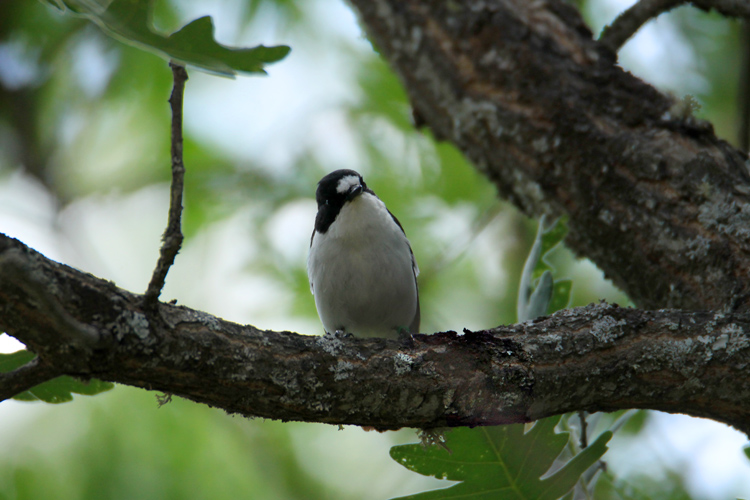Dispersal movements of animals may be jointly influenced by the phenotype of dispersers and the environmental and social conditions in the source and destination areas. Dispersal is often strongly influenced by population density, but the presence of conspecifics may affect dispersal motivation differentially depending on the social tolerance or size-based dominance of individuals, thus generating phenotypic differences between dispersers and non-dispersers. These differences, however, should not necessarily be consistent over time due to fluctuations in environmental factors influencing dispersal, yet the association between phenotype and dispersal has rarely been studied over long time periods. In this study, a pied flycatcher Ficedula hypoleuca population monitored over three decades was used to investigate the effect of breeding density and body size on natal dispersal propensity between the ancestral habitat of the specie (an oak forest) and a new habitat (a pine plantation) where nest-boxes were installed for pied flycatcher colonization. Large-sized individuals born in the newly-created habitat typically moved to settle in the more densely populated areas of the ancestral habitat, possibly because bigger individuals can compete more effectively for territories in the preferred habitat and exclude smaller, subordinate individuals. However, the extent of size-dependent dispersal observed during the colonization of the pine forest decreased and eventually disappeared as soon as breeding densities became similar in the two areas. This long-term study indicates that dispersal patterns are not always consistent over time, but rather may vary depending on the dynamic balance between extrinsic factors, such as the social and competitive environment, and intrinsic factors influencing dispersal success, such as body size. informacion[at]ebd.csic.es: Camacho et al (2019) Long-term dynamics of phenotype-dependent dispersal within a wild bird population. Behav Ecol DOI 10.1093/beheco/ary195
https://academic.oup.com/beheco/advance-article/doi/10.1093/beheco/ary195/5284996

 Las altas temperaturas están provocando que las lagunas y las marismas de Doñana pierdan agua rápidamente
Las altas temperaturas están provocando que las lagunas y las marismas de Doñana pierdan agua rápidamente




